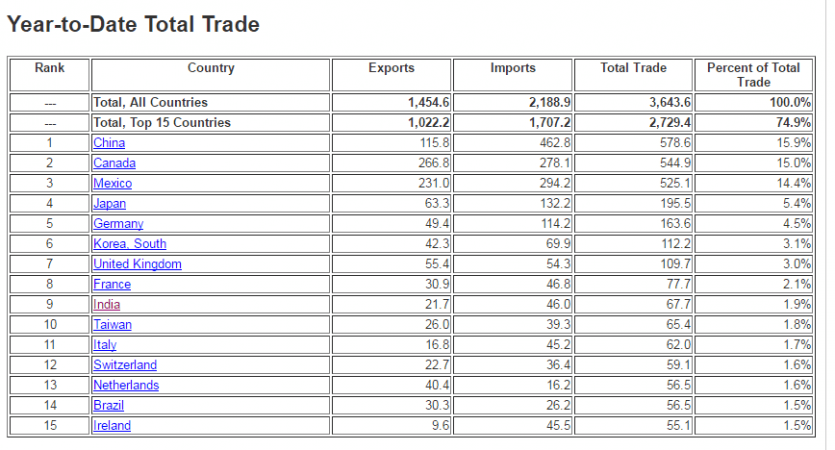
India was one of America's top 10 trading partners last year, a marked improvement of two spots from 2014. An analyst said that it probably is for the first time India broke into the top trading partners of the US list, an indication of rising potential for increased bilateral trade.
Read: Visa restrictions and remittances, not trade dynamics cause for concern
In the calendar year (CY) 2016, total trade between the two countries was $67.7 billion, with imports (from India) at $46 billion far higher from $21.7 billion in exports (to India).
The biggest trading partner was China at $578 billion, followed by Canada ($544 billion) and Mexico ($525 billion), according to the data. The three countries accounted for 45 percent of America's total trade.
The provisional data pertaining to trade was recently published by the United States Census Bureau.
However, India's Asian peers such as Korea and Japan ranked above and so do Germany, France and the UK.
The news comes even as Indian IT services companies are feeling concerned over the proposed changes to H-1B visa rules by the Donald Trump administration. If the changes go through, the likes of TCS, Infosys, Wipro and Tech Mahindra could take a big hit on their bottomlines.
"...the bigger stickling point will be service trade flows, as US and Canada make up for 60% of India's software exports," Radhika Rao, economist, group research, DBS Bank, said in a note on Wednesday.
In related news, Prime Minister Narendra Modi made an indirect reference to the US trying to impose restrictions on migrant workers, especially those involving skilled work.
"Prime Minister referred to the role of skilled Indian talent in enriching the American economy and society. He urged developing a reflective, balanced and farsighted perspective on movement of skilled professionals," an official statement released by Modi's office said, after a 26-member US delegation comprising Congressional representatives called on him in New Delhi on Tuesday.
America's trade deficit with India was $1.8 billion in November 2016, much lower than China ($28.4 billion), Japan ($5.7 billion), Mexico ($5.7 billion) and Germany ($5.3 billion) according to the provisional data published by the US Bureau of Economic Analysis on January 6, 2017.















